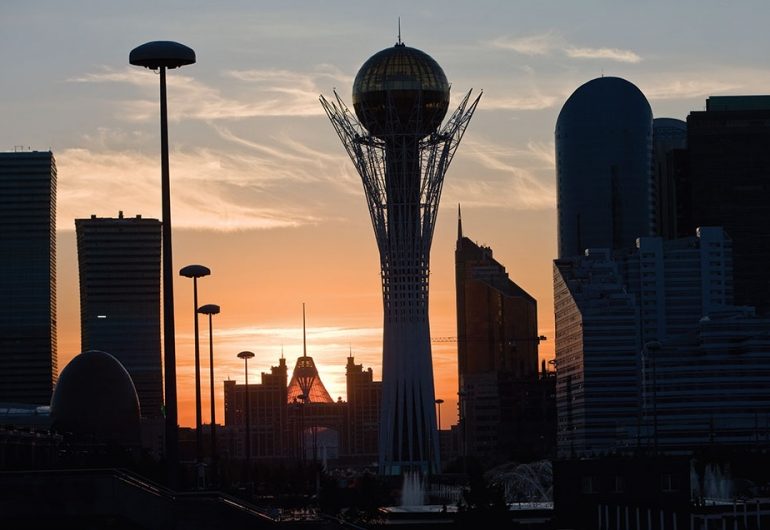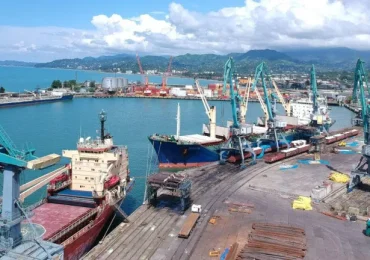Ten facts about Astana that will truly surprise you.
1. IT’S OKAY TO CHANGE THE NAME
Astana is not only the new capital of Kazakhstan (replacing Almaty in 1998) but also a city known for changing its name often. From 1830 to 1961, the military outpost and the city later built on its site were called Akmolinsk (“Akmola” in Kazakh). In 1961, it was renamed Tselinograd during the development of virgin lands surrounding it to boost Soviet agriculture and stayed this way until 1992. After Kazakhstan gained independence, the city officially returned to its original name, this time in Kazakh, becoming Akmola once again. When on June 10, 1998, the capital moved from Almaty, Akmola switched to Astana—which means “capital” in Kazakh. Quite subtle, isn’t it? There are only two city names in the world with such straightforward translations from their native languages: Astana and Seoul.
In 2016, Kazakhstani parliamentarians suggested new names for the city: three popular options were Nazarbayev, Nursultan and Nur-Astana. However, no name proved to be popular among the public.
2. FASTER THAN THE REST
Astana officially reached a population of one million citizens in the summer of 2017. This demographic mark was hit unofficially in 2014, but for a long time was impossible to prove as some citizens ignored the mandatory registration requirement at their places of residence.
The capital is the fastest growing city in the Republic of Kazakhstan. Annual population growth during the ten years from 1999 to 2009 amounted to an 86.7% increase. The city’s territory also expanded significantly, thanks to land extracted from Akmola Oblast (Region), and now stretches over 801.54 square meters.
3. CENTER OF GRAVITY
According to the last nation-wide population census (in 2009), only 36% of Astana’s residents were born in the city. The rest are migrants from other regions of Kazakhstan. Nine years ago, 19.4% of such migrants were people from Akmola oblast. The top three areas supplying new residents to the capital today are the regions of South Kazakhstan, Karaganda and Kostanay.
4. CAPITAL OF RECORDS
There is a new Guinness World Records achievement waiting for you on every corner of your walk through Astana. For example, the capital of Kazakhstan is the hometown of the Ailand entertainment center, which includes the oceanarium furthest from an ocean in the world. The Khan Shatyr mall also appears on the pages of the Guinness Book. This creation, designed by the famous architect Norman Foster, is the world’s largest tent-shaped building. The height of this architectural miracle is 150 meters including its spire.
You get the chance to see the city’s oldest tree while walking in the park on the left bank of the Ishim River. The black poplar is more than 120 years old. Greenery receives special treatment in Astana—more than a million trees and shrubs have been planted here over the last 15 years, and soon a botanical garden will open, the first of its kind in Central Asia.
5. EXTREME TEMPERATURES
Astana sets temperature records as well. It is considered the world’s second-coldest capital city after Ulan Bator. However, don’t be fooled into thinking that it’s always freezing in the metropolis. This Central Asian region’s highest recorded difference in temperatures is 100 degrees Celsius—luckily, not in one year. The peak temperature in 1936 was 41.6 degrees Celsius; the lowest ever recorded was 51.6 degrees, in 1893. It is best to visit Astana during the spring or summer. Make sure to pack an umbrella and some water-resistant clothes, since these seasons are not only known for warmer temperatures, but also heavy rainfall.
6. QUIRKY ARCHITECTURE
In the architecture world, Astana is often called the child of East and West. Its remarkable style is the result of world-renowned masters such as Kisho Kurokawa, Manfredi Nicoletti, Micael Calatrava and, of course, Norman Foster.
One of the most unusual buildings is the Palace of Peace and reconciliation, which resembles the Giza Pyramids. The Kazakhstan Central Concert Hall has a room shaped like a dombyra, a Kazakh traditional musical instrument, and the Nazarbayev Center looks more like a cosmic research institute than a public building. Other tourist attractions include the Baiterek monument and the country’s national pavilion built for EXPO-2017, called “the Sphere.” However, Star Wars fans have been referring to the latter as the Death Star. A quite fitting name, if you look at it.
7. TEA FLOWS LIKE WATER
Kazakhstan has the highest annual consumption of black tea—1.2 kg per person. To compare with another tea-loving nation, India drinks 650 grams per capita per year. Kazakhstan imports at least $100 million worth of the beverage each year, as the country no longer produces tea itself. Almost nobody drinks green tea.
Don’t be surprised when this drink is offered to you everywhere from hair salons to luxury restaurants—and don’t decline it. Rejecting tea, which is used for welcoming all special guests (including astronauts), will be regarded as impolite.
8. IMMERSION IN HISTORY
Astana is the home town of one of the world’s ten largest museums. The National Museum of the Republic of Kazakhstan holds the famous Golden Man; the golden finds of Berel, Taldy, and Taksay-2 mounds; unique excavations from the Botay settlement and the medieval towns of Turkestan and Otyrar. They are the most precious artifacts in Kazakhstan, both in terms of hard money and historical value, and form the national treasury.
9. CITY OF SPORTS
This sports-oriented city takes pride in its well-developed infrastructure for amateur athletes and healthy lifestyles. Astana holds a high number of marathons and mass sports events. Astana Football Club and Barys Hockey Team have some of the highest numbers of professional awards in their collections in Kazakhstan’s history. If you ever visit Astana during football or hockey season, check out their matches. Be sure to get your tickets early, because demand from loyal fans is astonishingly high.
The Kazakhstani capital also gave its name to one of the best bicycle racing teams on the planet—the Astana Pro Team, whose general manager Alexander Vinokurov is a big name far beyond Kazakhstan. It is due to his efforts that the country organizes amateur and professional bike rides: you can even join one on your next visit.
10. THE MOST ACCESSIBLE MAYOR
The post of akim (the local word for mayor) is one of the most prestigious public service jobs in Kazakhstan. In various years, future heads of the president’s office and national funds, as well as soon-to-be ministers and ambassadors, occupied this position. Many consider the current mayor, Aset Issekeshev, the most easily accessible and technologically adept politician the city has seen so far. He runs his own social media profiles, replying to people’s complaints directly, and often meets citizens outside of formal events. Issekeshev may comment on your Astana review, no matter how critical, as long as it’s constructive. Don’t forget to tag him in your post!

















